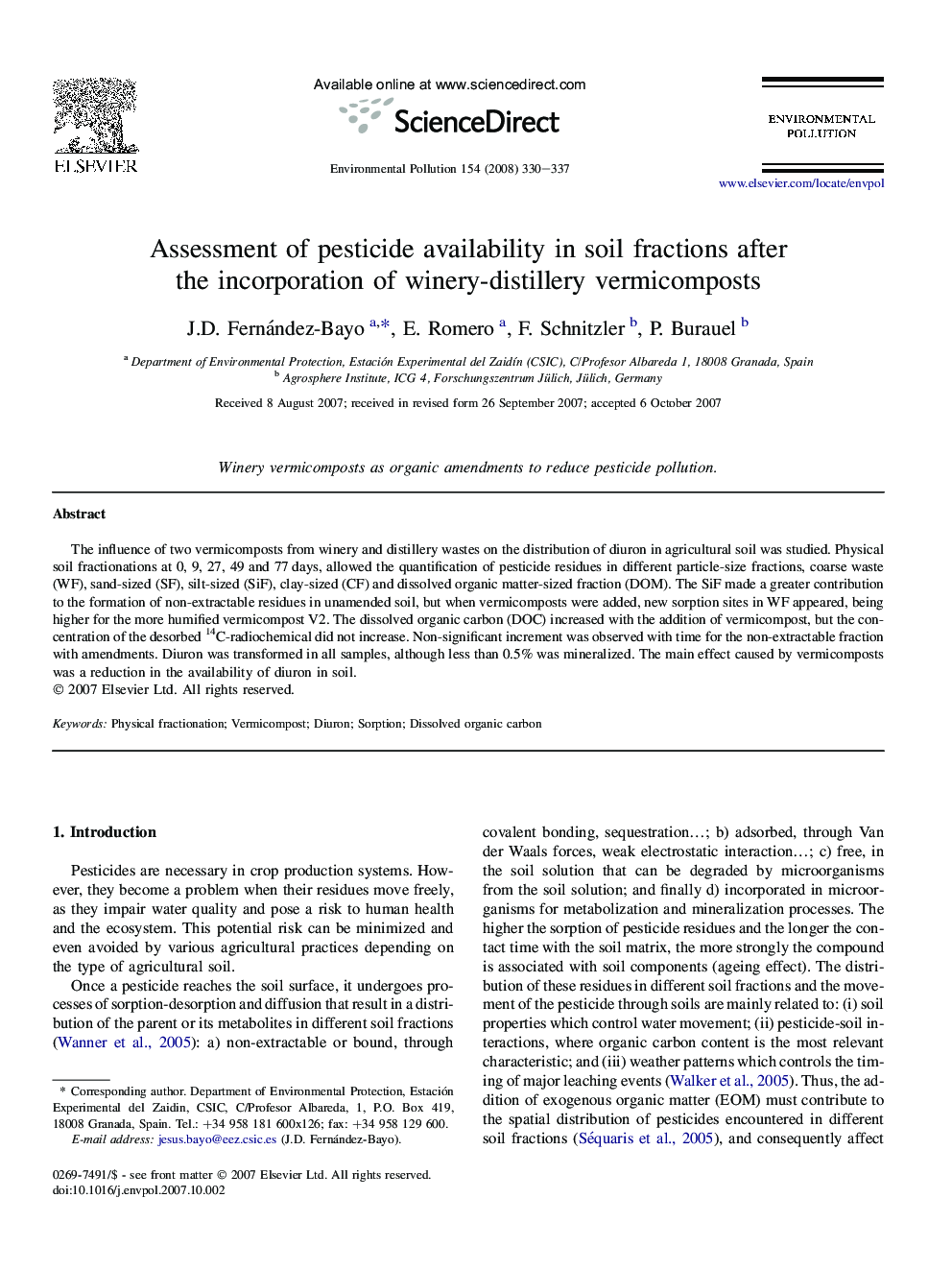| Article ID | Journal | Published Year | Pages | File Type |
|---|---|---|---|---|
| 4426664 | Environmental Pollution | 2008 | 8 Pages |
The influence of two vermicomposts from winery and distillery wastes on the distribution of diuron in agricultural soil was studied. Physical soil fractionations at 0, 9, 27, 49 and 77 days, allowed the quantification of pesticide residues in different particle-size fractions, coarse waste (WF), sand-sized (SF), silt-sized (SiF), clay-sized (CF) and dissolved organic matter-sized fraction (DOM). The SiF made a greater contribution to the formation of non-extractable residues in unamended soil, but when vermicomposts were added, new sorption sites in WF appeared, being higher for the more humified vermicompost V2. The dissolved organic carbon (DOC) increased with the addition of vermicompost, but the concentration of the desorbed 14C-radiochemical did not increase. Non-significant increment was observed with time for the non-extractable fraction with amendments. Diuron was transformed in all samples, although less than 0.5% was mineralized. The main effect caused by vermicomposts was a reduction in the availability of diuron in soil.
